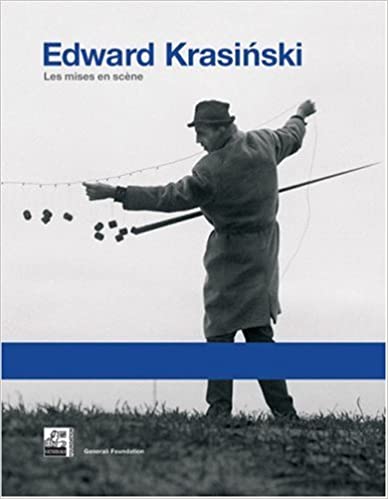Edward Krasinski
Les mises en scene
Description
Edward Krasiński (1925–2004 Łuck, Warsaw) is one of the most important protagonists of the advanced Polish art scene of the 1960s and 1970s. Building on the avant-garde legacy of Constructivism and Surrealism in Poland, he created an oeuvre that is comprehensively documented for the first time in this publication using around 300 historical illustrations. Numerous photographs by Eustachy Kossakowski and Tadeusz Rolke, which have accompanied Krasiński's work for more than 40 years, are represented here. The focus is on Krasiński's unique exhibition designs, which always went beyond the presentation of individual works. Exhibition rooms became extraordinary spatial situations into which he integrated his works. In doing so, he repeatedly opened up a new perspective on his artistic work, which oscillates between painting, sculpture and installation. For example, he made an environment out of his studio, which he had taken over from the constructivist Henryk Stażewski, and addressed it in new works. Well known is his play with the blue “line”, which appeared as a rejuvenation in his sculptural objects, as a telex at the Tokyo Biennale in 1970, or as adhesive tape. The blue "Scotch tape" became Krasiński's preferred means of defining spaces.
Publisher: Generali Foundation
Language: German, English
352 pages
ISBN-13: 978-3901107498
Edward Krasiński (1925, Łuck – 2004, Warsaw) is one of the most important protagonists of the progressive Polish art scene of the 1960s and 1970s. His work drew – suggestion: is based/is founded on the avant-garde heritage of Constructivism and Surrealism in Poland, and is fully documented here for the first time with around 300 historical illustrations. This book includes numerous photographs by Eustachy Kossakowski and Tadeusz Rolke, who followed Krasiński's work for more than forty years. The focus is on Krasiński's unique exhibition designs, which always went beyond the presentation of individual works. Exhibitions became extraordinary spaces into which he integrated his works. Thus he provided ever new perspectives on his art which oscillates between painting, sculpture, and installation. Krasiński turned his studio, for example, which he had taken over from the Constructivist Henryk Stażewski, into an environment that then became a theme in new works. His long-running "game" with the blue "line" is well known. The blue “line” could be represented by a tapering down of his sculptural objects, by a telex at the Tokyo Biennale in 1970, or by a strip of Scotch tape. This blue tape became Krasiński's chosen means of defining spaces.

